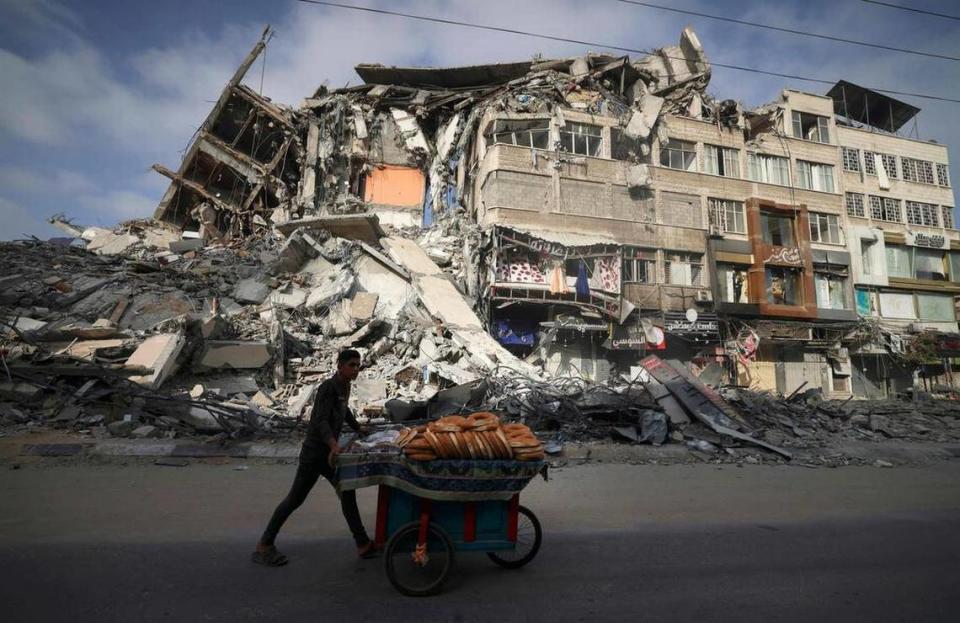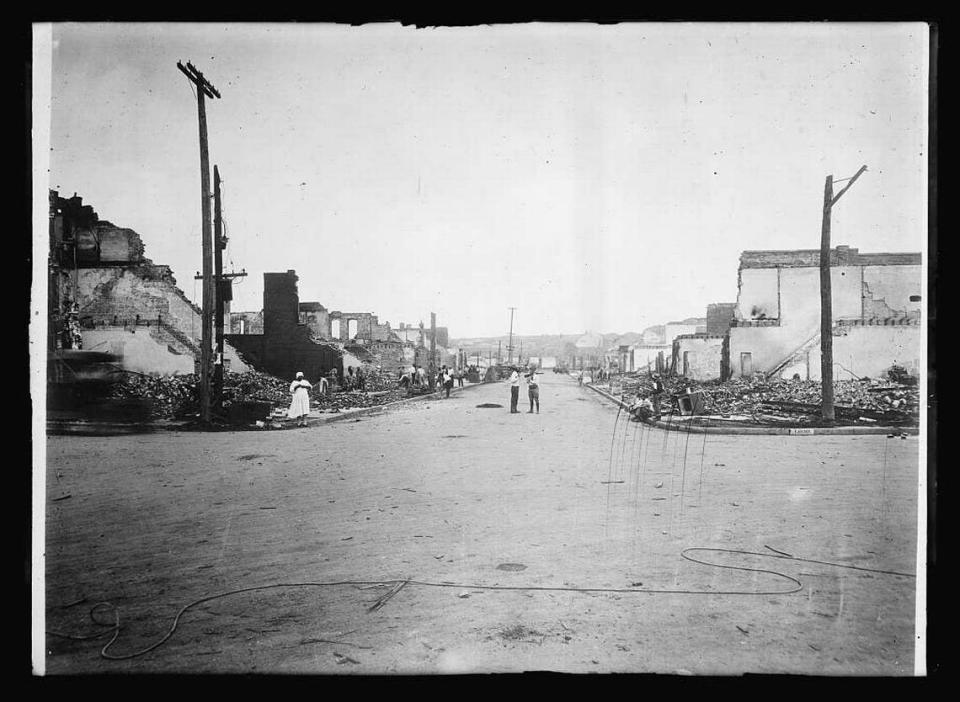The 44 Percent: Liberty City, Tulsa Race Massacre and Samaria Rice
- Oops!Something went wrong.Please try again later.
You can tell a lot about a place by its anniversaries.
Memorial Day, for example, honors those who died fighting for the great US of A. It’s one of our many holidays honoring our military — second to only Veterans Day.
To some, however, Memorial Day recalls bad memories. Just think of the events that have occurred around the holiday:
The Tulsa Race Massacre, during which at least 300 Black Americans lost their lives and thousands more lost their homes and businesses over a two day period, began May 31, 1921.
Raymond Herisse was killed May 30, 2011, when Miami Beach police unleashed a torrent of 116 bullets on the 22-year-old who was behind the wheel of a car at the time.
George Floyd was murdered May 25, 2020 when Derek Chauvin, an ex-Minneapolis police officer, kneeled on his back for more than nine minutes.
Let that sit for a second. Three incidents, all within the last 100 years, involving the premature end of Black life. If you don’t see an issue with that, then we live in two entirely different realities.
INSIDE THE 305
An inside look at how Liberty City is changing:
There are few pieces that have been as challenging but also as rewarding as this one. People living in places like Liberty City don’t often see their communities written about in a way that reflects their beauty.
Without getting too much into the reporting, what I saw in Liberty City was much different than the narratives portrayed within the media. There’s a resiliency embedded into the very fabric of that neighborhood that keeps people going in spite of their day-to-day tribulations. Don’t get me wrong: Liberty City does have its issues, however, we — as Miamians, Floridians, Americans — should do a little more to understand why these issues exist before demonizing a community.
Related Stories:
Meet the New Miami: A series of self-sustaining, interconnected villages
It’s a new day in old Overtown. Miami’s original Black district is making a comeback

Israel, Palestine conflict to test alliance between Black and Jewish Miamians:
I don’t think I’ve ever been called anti-Semitic as much as I have in the 24-hour span since this article published. To say that it didn’t hurt would be a lie; as a person who has regularly faced discrimination on the base of my color, I definitely do not want to put anyone else in that position.
Although it might be unpopular to broadcast criticism of the Israeli government here in South Florida, it’s important to see things from someone else’s point of view. Even if you don’t agree, knowing the other side’s argument may strengthen your own. At the very least, Samantha Gross and I were just trying to spark a conversation that’s long overdue. To assume that this article was an ill-spirited attempt to malign Jews is ludicrous considering one, the story ends with a call for unity, and two, my firm belief in solidarity among all oppressed people.
OUTSIDE THE 305

Samaria Rice and the hustling of Black death:
Imagine losing your child at the hands of police. Now imagine the entire world knowing you lost your child.
Such was the situation that Samaria Rice found herself in after an officer killed her son Tamir in 2014. And as someone who didn’t want activists and attorneys to “handle everything,” Rice’s actions – specifically her screed calling out Ben Crump, Tamika Mallory and others – now make sense:
She became particularly animated as she described those who make a living “hustling Black death.” From where she sits, she sees “book deals, movie deals.” Cocking her head to the side, as if speaking directly to her adversaries, she adds, “What was you doing?”
In short, this profile by Imani Perry in The Cut was brilliant. The insight into Rice’s thinking as she navigates life without Tamir while trying to balance preserving his legacy and raising her two other children reminded me just how powerful valid, nuanced criticism can be. Rice’s critiques of activists and organizers, paired with Perry’s ability to weave in her own personal narrative, forces the reader to look inward, specifically at this idea of “hustling Black death.”
Little of the money circulating within this movement ends up with the families of the victims of police killings. The vast majority goes to a professional class of spokespeople: organizers, writers, and academics. And the killings continue. So whether we deliberately hustle Black death or not, it is without question a nefarious hustle. The evidence of this can be found in how much stays the same. We are still hashtagging names seven years after Tamir’s death, nine years after Trayvon Martin’s, one year after George Floyd’s. And there are literally thousands of names we will likely never learn.

A look at the Tulsa Race Massacre 100 years later:
To commemorate the 100-year anniversary of the Tulsa Race Massacre, The New York Times pieced together an extensive account of the events preceding, during and after the fateful two days in 1921. The project also features an interactive map that depicts how vast and prosperous the community of Greenwood really was.
One quote that particularly caught my attention came courtesy of author Scott Ellsworth:
Greenwood wasn’t a gift from anyone. It was created by the citizens of Greenwood who withstood the tragedy of 1921 and rebuilt it again. Greenwood is the story of resilience. It is the story of courage.
HIGH CULTURE

New comedy series stars Saturday Night Live writer Sam Jay:
I don’t know how many of you are familiar with Sam Jay (I highly recommend her Netflix stand-up “3 in the Morning”), but she’s hilarious. Well turns out I’m not that only one who thinks she’s funny; her new weekly show entitled “PAUSE with Sam Jay” premiered May 21 on HBO Max. The first episode challenges the viewer to reconsider our perception of Black Conservatism plus features an amazing sketch about a Black Constitution.
Where does “The 44 Percent” name come from? Click here to find out how Miami history influenced the newsletter’s title.

